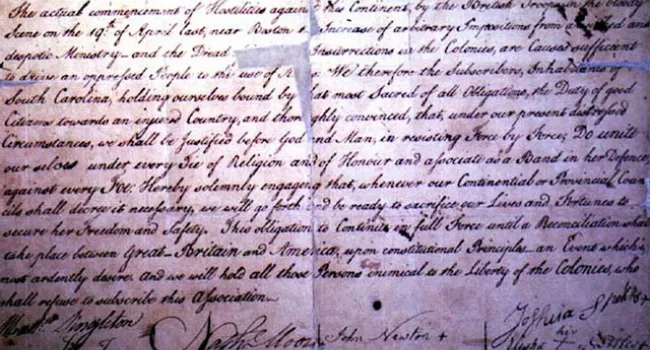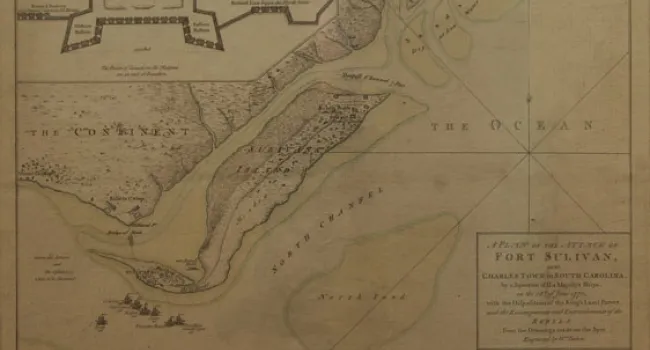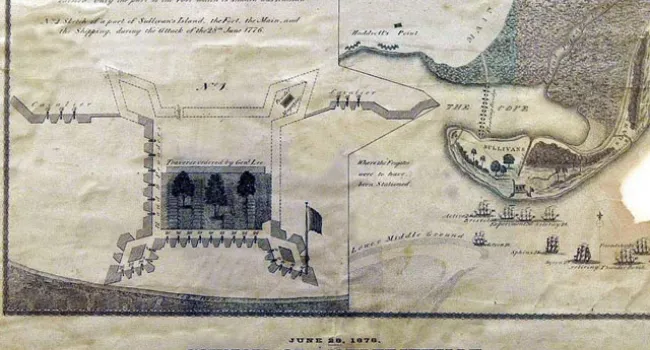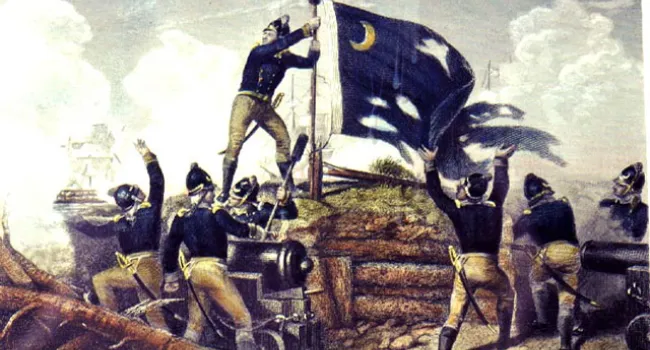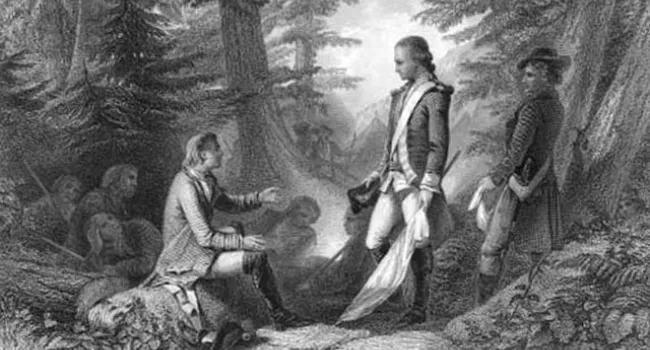
The Battle of Kings Mountain, engraved in 1859 by Johnson, Fry and Company from an original painting by Chappel. Although the leader of the British forces here was a Scotsman, Major Patrick Ferguson, the riflemen opposing each other were Americans. Threatened by Ferguson with death if they did not submit, more than 900 angry frontiersmen moved against a defensive position on Kings Mountain that Ferguson and his Loyalist recruits had occupied. On October 7, 1780, using guerilla tactics rather than open attack, the Upcountry riflemen forced the Loyalists to surrender, then killed those who asked for quarter, leaving the wounded to die unattended on top of the mountain. In spite of the brutality, it was a stunning victory, coming as it did so soon after the demoralizing loss at Camden.
Courtesy of the South Caroliniana Library.
Standards
- This indicator was developed to encourage inquiry into the process which led to the formation of the U.S. government, including the convening of the Continental Congresses, the passage of the Articles of Confederation, and the adoption of the U.S. Constitution.
- This indicator was developed to encourage inquiry into the influence of taxation and regulation in the colonial independence movement leading to the Declaration of Independence and the beginning of the American Revolution.
- This indicator was developed to encourage inquiry into South Carolina’s participation in the American Revolution and the subsequent creation of a new government.
- 8.2.CE Explain the economic, political, and social factors surrounding the American Revolution.

